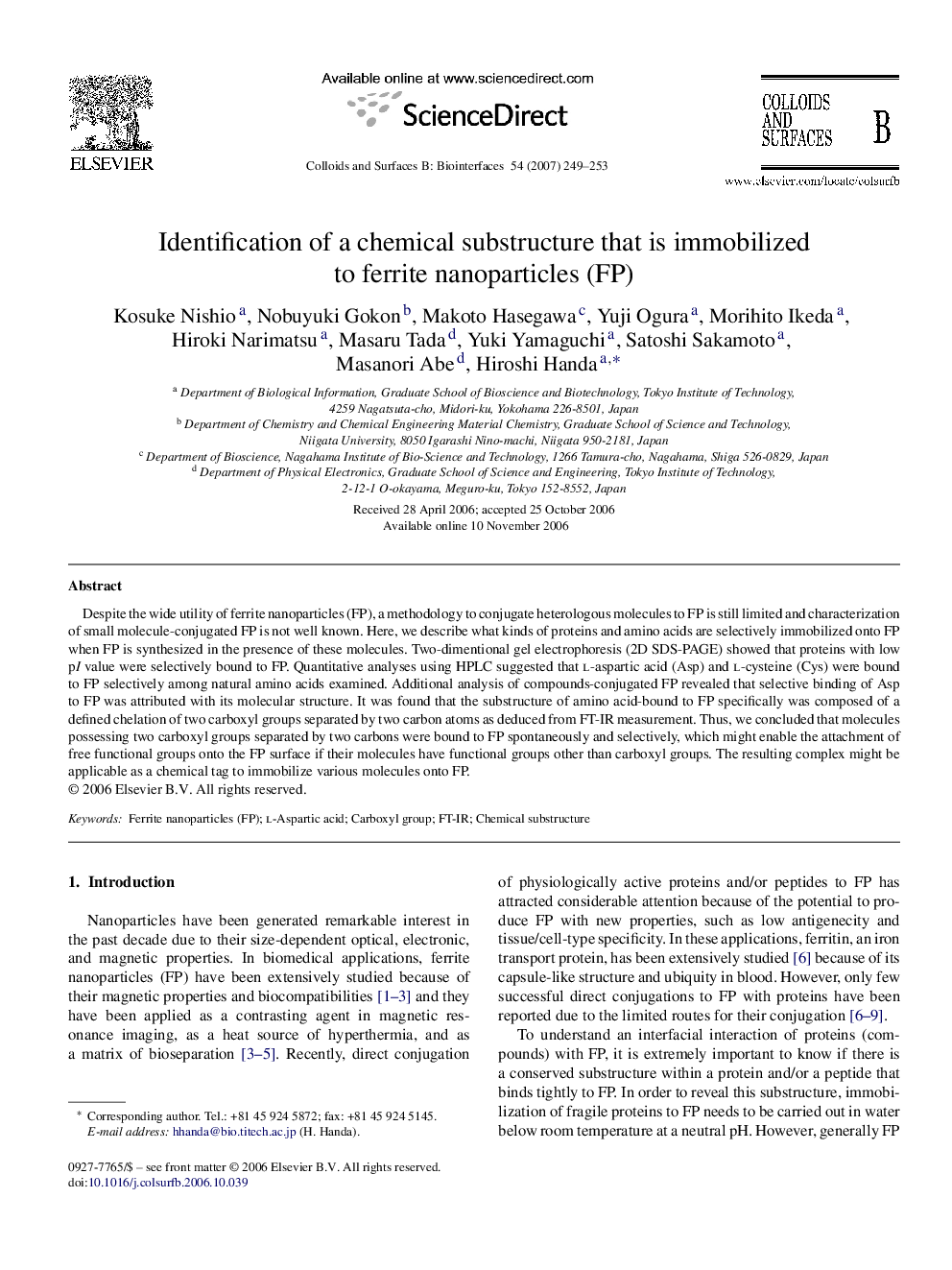| Article ID | Journal | Published Year | Pages | File Type |
|---|---|---|---|---|
| 603022 | Colloids and Surfaces B: Biointerfaces | 2007 | 5 Pages |
Despite the wide utility of ferrite nanoparticles (FP), a methodology to conjugate heterologous molecules to FP is still limited and characterization of small molecule-conjugated FP is not well known. Here, we describe what kinds of proteins and amino acids are selectively immobilized onto FP when FP is synthesized in the presence of these molecules. Two-dimentional gel electrophoresis (2D SDS-PAGE) showed that proteins with low pI value were selectively bound to FP. Quantitative analyses using HPLC suggested that l-aspartic acid (Asp) and l-cysteine (Cys) were bound to FP selectively among natural amino acids examined. Additional analysis of compounds-conjugated FP revealed that selective binding of Asp to FP was attributed with its molecular structure. It was found that the substructure of amino acid-bound to FP specifically was composed of a defined chelation of two carboxyl groups separated by two carbon atoms as deduced from FT-IR measurement. Thus, we concluded that molecules possessing two carboxyl groups separated by two carbons were bound to FP spontaneously and selectively, which might enable the attachment of free functional groups onto the FP surface if their molecules have functional groups other than carboxyl groups. The resulting complex might be applicable as a chemical tag to immobilize various molecules onto FP.
